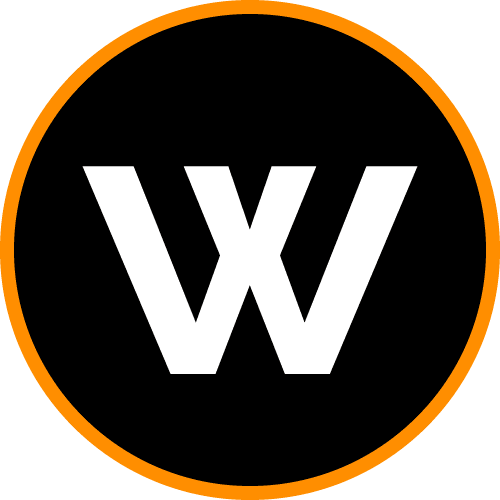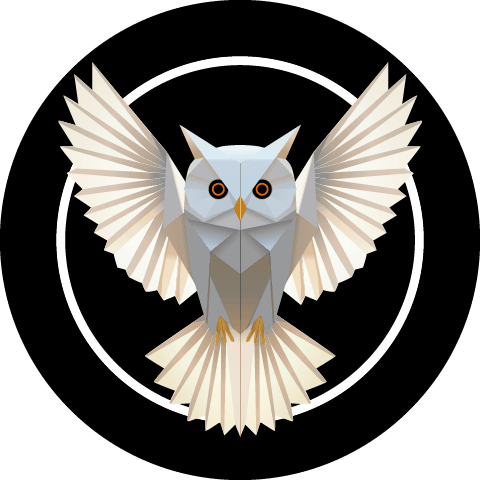
Building What Matters
with AI First Principles
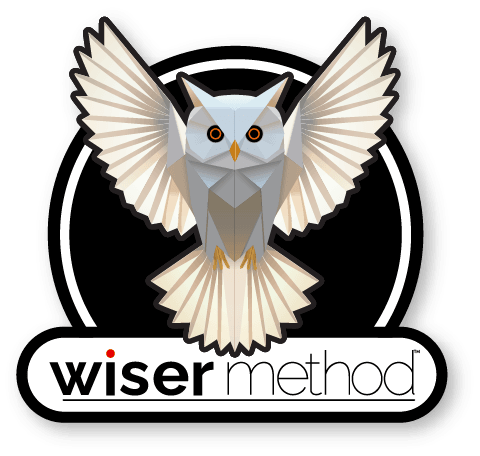
Introduction
Most companies automate their dysfunction, then wonder why AI makes everything worse. They create process maps nobody follows, measure what doesn't matter, and amplify inefficiency with technology. The WISER Method is the kill switch for that nonsense.
AI First Principles are the framework for human-centered AI deployment. WISER is the method that makes it real. It gives builders a systematic way to question assumptions, eliminate bureaucratic waste, and rebuild work around AI's capabilities from day one.
WISER is a system of four components working in concert:
1. The Charter: Your living blueprint; the documents that capture evolving understanding.
2. The AIM Process: The W-I-S-E-R stages you follow to Assess, Iterate, and Master the work.
3. The Recipes: Tactical guides that adapt the AIM Process and Charter for specific contexts.
4. The Roles: The non-negotiable functions your team must embody to execute the method.1. Charter
Your Living Implementation Guide
The WISER Charter is your dynamic blueprint—a collection of four interconnected documents that evolve as you learn. Unlike static project plans that gather dust, your Charter captures hard-won understanding and guides every decision. It is the central artifact your team creates and refines using the AIM Process. The four foundational Charter document are:
Objective Scorecard: What you're trying to achieve, how you'll measure it, and who owns each outcome. This isn't a wishlist, it's your North Star with concrete metrics and named accountability.
System Map: The visual representation of how work actually flows—not the idealized version. It shows every handoff, bottleneck, and workaround, updated continuously as you test changes.
Agency Org Chart: The decision-making authority structure between humans and AI systems. It maps which decisions are autonomous, collaborative, or human-only, with clear escalation triggers.
Iteration Blueprint: Your learning sequence through the I→S→E cycles. It prioritizes changes by learning potential, not just by pain points.
Your Charter begins as educated assumptions in ASSESS, gets refined through reality testing in ITERATE, and becomes your implementation guide for MASTER. Teams that skip Charter development inevitably chase the wrong objectives with unclear accountability.
2. AIM Process
Assess, Iterate, then Master
WISER forces you through three distinct stages of orientation: Assess, Iterate, and Master. Never mix them. This separation forces you to understand problems before making big changes9 while maintaining momentum through small improvements.12 The sequence is the core engine for evolving your Charter:

ASSESS
Teams automate first and ask questions later, then wonder why their AI makes everything worse. They digitize broken workflows and call it transformation. ASSESS has one focus: answer Why about everything: why you measure the things you do, why the current system works this way, why decisions get made where they do, why you'll tackle changes in a specific sequence.9 Until you can defend every aspect of the problem, you have no business designing solutions.9

Why
- Define Purpose:
State the mission in one clear sentence. Example: "Eliminate the bureaucratic waste that's killing our team's ability to serve customers." This is your North Star. If a proposal doesn't serve it, throw it out. - Map What Exists:
Get the 20,000-foot view of how work flows. Quick interviews with managers or a walkthrough with one experienced person will do. Don't dive deep—you're sketching the official process and obvious pain points.10 This initial mapping becomes your preliminary System Map, a rough sketch you'll refine dramatically in ITERATE. - Hypothesize What Could Be Better:
Brainstorm the biggest improvement opportunities based on what you saw. Form a few hypotheses to test in ITERATE (e.g., "Automating step X might cut waiting time by 80%."). Focus ideas on reducing friction for people, not just juicing internal metrics.2These hypotheses seed your initial Iteration Blueprint. - Create Your Objective Scorecard:
Get this wrong and you fail. Be ruthlessly concrete about what to achieve and how to measure it. Example: "Reduce approval time from 14 days to 2 days while maintaining fraud detection accuracy above 99.9%." Vague goals like "improve efficiency" doom the effort. Give each objective one accountable human owner.1 Your scorecard must track outcomes (hitting targets), velocity (iteration speed), and exceptions (workarounds). Every workaround is a clue. - Create Your Agency Org Chart:
Define the decision-making authority between humans and AI. For each key decision, specify if it is Autonomous (AI decides), Collaborative (AI recommends, human approves), or Human-Only. Name the human accountable for each outcome. This initial framework evolves as you learn which decisions require irreplaceable human judgment.4. - Create Your Iteration Blueprint:
Outline the sequence of I→S→E cycles you plan to run. Don't just prioritize by pain points; rank by learning potential. Start with changes that will teach you the most about the system's hidden logic. Your blueprint is a living plan, not scripture.
With your initial WISER Charter complete, you have the foundation for everything that follows.
ITERATE
Most improvement efforts either move too slow (endless analysis) or too fast (breaking things that worked). ITERATE splits the difference: rapid cycles that learn and improve incrementally without destroying.13 Multiple I→S→E loops build understanding and make targeted improvements until you prove you know enough to rebuild the system properly.9,14
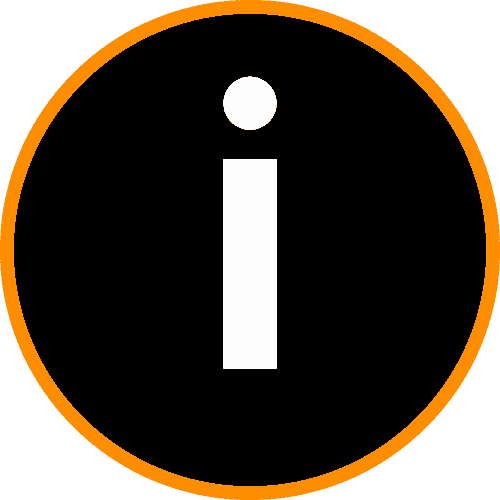
Identify
In Identify, you act like an investigator, figuring out what's really happening on the ground. Use what you discover to refine your Charter based on observed reality.
- Engage with People Doing the Work:
Talk to everyone who touches the process. Shadow them. If you can, do the job. Feel their pain firsthand. People fighting the system every day know its flaws best.3 Their insights are critical for refining your Agency Org Chart with real decision patterns. - Map Process Reality:
Trace how work actually flows, not how it's supposed to. A simple flow diagram will highlight clogs and loops that text misses.10 This adds to your System Map. Use these insights to also improve your Iteration Blueprint and Agency Org Chart. - Assess Technology and Systems:
List all tools, systems, and data involved. Note where the same data gets entered multiple times. Flag manual steps that exist only because systems don't integrate. - Understand Outcomes and Impact:
Pin down what results this process produces and why they matter. Know the cost of failure. Validate your Objective Scorecard against this reality—are you measuring what actually drives valuable outcomes? - Triage Complexity:
List every point of complexity you find – every weird rule, approval, exception path, special case, etc. Label each one as necessary or unnecessary. - Necessary complexity:
Things that genuinely add value or reduce risk. For example, compliance checkpoints, safety protocols, or quality controls that give a competitive advantage. (Plan to preserve or enhance these.) - Unnecessary complexity:
Bureaucratic bloat. For example, redundant approvals, outdated forms, reports no one reads, and layers of sign-off that add zero value. (These are prime targets to eliminate.) - Uncertainty:
If you're unsure, dig deeper before deciding.7 Always understand why something exists before changing it.9 Perfect categorization isn't required—you can revisit this in the next ITERATE cycle. Document your complexity findings in your Iteration Blueprint: which unnecessary complexity should you eliminate first, and which necessary complexity might benefit from AI enhancement?
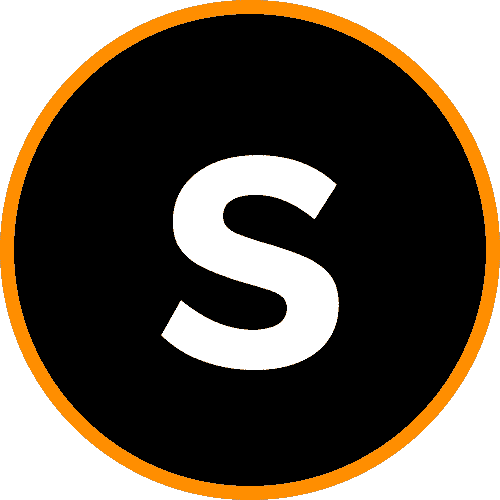
Simplify
In Simplify, you turn Identify observations into targeted improvements, reworking your Charter to reflect your intended changes
- Reassess Your Iteration Blueprint:
Revisit your plan. Does the sequence of attack still make sense? Adjust the order of your cycles to hit the most valuable, enlightening changes first. An evolving blueprint means you're learning. - Create Deletion List:
List everything marked as unnecessary complexity. For each, note why it's safe to remove. Test deletions carefully by bypassing the step and monitoring results. Treat every deletion as dangerous until proven safe. - Design Process Improvements:
For necessary complexity, design better handling. Eliminate handoffs. Restructure approval chains. For complexity that must remain, handle it elegantly so it doesn't feel like friction. Update your Agency Org Chart with proposed changes to decision authority. - Plan Practical Solutions:
Find the smallest change that moves the needle. This could be a sticky note, a whiteboard column, a swapped approver, a focused ai agent, or a simple script. If the change touches a high-risk area (security, safety), add safeguards immediately.6 - Validate Plans with Practitioners:
Run your plans by the people who do the work. A quick demo or walkthrough is fine. Their feedback is gold; it will save you from costly mistakes and build the buy-in needed for change.

Evolve
In Evolve, you implement the plans made in Simplify and watch what happens, continuously updating your Charter based on reality.
- Implement Planned Changes:
Make changes in small increments. Start with low-risk quick wins to build momentum. Change one thing at a time so you can isolate cause and effect. - Test and Observe Impact:
Monitor effects using your Objective Scorecard. Watch for unintended consequences like a hawk. The moment you see a negative trend, adjust immediately. - Capture Learning:
Every change is a lesson. After each cycle, update all four Charter documents. Refine your Agency Org Chart based on observed decision-making. Update your System Map to reflect the new reality. - Make Real-Time Adjustments:
Course-correct the moment you see a problem. Don't wait for cycle endings. If removing a control spikes risk, restore it immediately. Real-time fixes prevent small issues from becoming failures. - Update Charter and Decide Next Steps:
After each round, ask: have you answered the critical "why does this exist?" for the major pain points? Do you understand the system well enough to redesign it? If yes, you've earned the right to rebuild, move to Master14. If potentially critical unknowns remain, adjust your Iteration Blueprint and run another I→S→E cycle.
MASTER
Organizations love total rebuilds because starting fresh feels easier than fixing what's broken.14 It rarely works. MASTER is your opportunity to Rebuild the system from the ground up with earned understanding.14 The I→S→E loops intentionally created architectural debt through temporary patches and workarounds; MASTER is where you repay that debt by building properly. This isn't a flaw; it's the intended engine of learning. You've earned this moment because you finally understand what you're rebuilding and why it matters.2
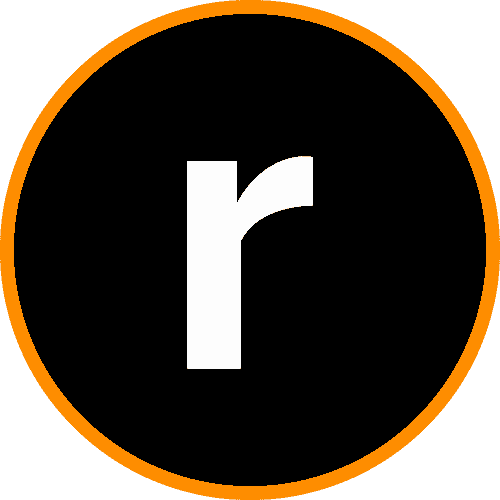
ReBuild
- Stay Implementation-Agnostic:
Use whatever development methodology fits your team—Agile, Lean, whatever. Rebuild based on the truths you discovered, as captured in your now-mature WISER Charter. - Redesign The System:
Create the final design using your mature Charter as the specification. This design is grounded in validated insights, not assumptions. Your evolved System Map becomes the implementation guide. Your mature Agency Org Chart dictates the human-AI partnership, preventing both over- and under-automation. - Design Based on Your Complexity Triage:
Make routine tasks frictionless. For areas that need complexity, embrace and enhance it. Your Charter has identified which complexity protects people versus what just slows them down.11 You're cutting bureaucratic waste while preserving strategic advantage. - Build Systems That Learn:
Design the new system for continuous learning, using your Charter as the foundation. Embed your Objective Scorecard metrics into the system's feedback loops. If any AI interacts with people, make it obvious it's an AI.5
- Define Purpose:
3. Recipes
Extending WISER for Your Context
Always follow the AIM Process. Use Recipes for specific contexts. Recipes are tactical playbooks that adapt the WISER framework, providing concrete steps, tools, and tips while staying true to its core principles.
Recipes can exist to extend for many domains, including:
WISER Charter Recipes: Defining how your Charter documents function in specific contexts.
Safety and Risk Recipes: Mitigating AI and process risks.
Process Integration Recipes: Blending WISER with frameworks like Agile or Lean.
Industry-Specific Recipes: Adapting WISER for Healthcare, Manufacturing, etc.
The recipe system makes WISER flexible: the Method is constant, but recipes provide domain expertise.
4. Roles
The Functions the Team Must Own
These are functions, not job titles. One person can fill multiple hats. Each role is critical for successfully executing the AIM Process and evolving the Charter.
Sponsor
The designated human owner of the Objective Scorecard.1 Has authority to implement changes and decides when the team moves from ITERATE to MASTER.Architect
Embodies the AI First Principle Reveal the Invisible10. Turns complex processes into clear visuals. Creates and maintains the System Map and is the primary custodian of all four Charter documents, ensuring they remain integrated and up-to-date..Sage
Provides context for Discovery Before Disruption9. Understands the unwritten rules and historical reasons behind existing systems. Validates complexity triage decisions for the Charter.Scout
Lives in the core tenet Requirements Demand Skepticism8. Asks tough questions that challenge assumptions. Validates Charterassumptions against ground truth.Smith
The senior engineer or systems architect for Iterate Towards What Works13 and Earn The Right To Rebuild.14 Implements changes, prototypes solutions, and translates Charter-driven improvements into working technology.Sentinel
Focuses on Prevent What Can't Be Fixed.6 Identifies risks and unintended consequences. Ensures solutions are safe and that Charterchanges don't violate constraints.Guide
Drives adherence to the WISER method. Prevents teams from skipping phases. Ensures the integrity and maturation of the four WISER components: Charter, AIM Process, Recipes, and Roles.Implementation Realities
WISER will expose how much of your organization runs on broken processes disguised as "the way we do things." Expect resistance.
What to Expect:
• Complexity triage threatens jobs.People whose roles exist solely to manage unnecessary bureaucracy will fight to preserve it.
• Agency Org Charts expose fake authority.
You'll discover who actually makes decisions versus who thinks they do.
• Mapping reality reveals rubber stamps.
Half your approvals add zero value. The other half protect turf, not customers.
• Every department claims they're special.
Each team will insist their needless complexity is the exception.
• Sponsors without real authority retreat under pressure.
Without real authority, WISER becomes improvement theater that changes nothing.
• Sacred cows will be defended.
Start with obviously wasteful processes. Build credibility before tackling anyone's pet projects.
• Some roles become unnecessary.
Handle this reality with transparency, not false reassurance.
• Middle managers will feel the most pressure.
Many believe their expertise lies in navigating the dysfunction you are eliminating.
• Success breeds more resistance.
The better WISER works, the more threatened people will become.
• Your Charter evolution is the goal.
Documents that change from guesses to blueprints is a clue that WISER is working.
WISER when done right isn't process improvement, it's organizational surgery.
WISER Method Newsletter
written by and for people who build things
APPENDIX A: AI FIrst Principles
AI isn't coming for jobs - it's coming for the bureaucracy that makes work miserable. But AI can only eliminate dysfunction for organizations willing to rebuild operations around its capabilities, not just add AI features to outdated processes.
The AI First Principles are for people charged with operationalizing AI in organizations. These foundational Values for deploying AI strategically are supported by operational Core Tenets that shape adoption. They assume existing governance will cover consumer protection, industry compliance, and legal obligations.
Values
1: People Own Objectives
Every objective needs a human owner to ensure people remain accountable for outcomes. When AI causes harm, the human owner is accountable, not the algorithm. Name the Owner2: Individuals Come First
Prioritize human autonomy, safety, and well-being above efficiency, profit, or convenience. AI amplifies values, biases, and the capacity for manipulation. Build systems that preserve human agency above all else.3: Value Build From User Experience
Design insight comes from living with the daily friction that analysis misses. People who navigate these daily realities understand what breaks and why. The people wrestling with system failures are the ones most qualified to design system futures.Core Tenets
4: Design a Hierarchy of Agency
Think org chart for AI decisions - clearly mapping when AI acts independently, when it recommends, and when it must escalate to humans. Design the discernment model, then let AI operate within it.5: Deception Destroys Trust
AI that pretends to be human eliminates informed consent and creates false relationships. People cannot collaborate effectively with what they don't recognize as artificial. Make AI obvious, not hidden.6: Prevent What Can't Be Fixed
Some risks destroy projects entirely. Security vulnerabilities, compliance violations, and data breaches require prevention, not iteration. Build regulatory and technical safeguards into architecture decisions from day one.7: Uncertainty Cultivates Wisdom
People instinctively demand definitive answers, but ranges and probabilities contain useful information. Forcing complex realities into simple yes/no responses destroys important nuance. Build systems that show the 'maybe' instead of hiding behind false certainty.8: Requirements Demand Skepticism
Challenge every assumption, especially 'that's how we've always done it.' Question until those doing the work can defend it with current logic. Principles applied dogmatically become obstacles (including these). When a requirement conflicts with reality, trust reality.9: Discovery Before Disruption
Systems reveal their true purpose when people actually use them. Seemingly pointless redundancies may reveal hidden logic. Unwritten rules only surface when engaging with the actual work. Always understand why things exist before you change them.10: Reveal the Invisible
Visual representations reveal complexity that written descriptions hide. A diagram shows bottlenecks, a journey map exposes human pain, a wireframe reveals confusion. Visuals become the instrument panel for navigating reality from the human perspective.11: Embrace Necessary Complexity
Some complexity creates competitive advantage, other complexity just creates work. A sophisticated fraud detection creates an edge; a five-approval purchase process does not. Delete what slows people down, invest in complexity that eliminates customer pain.12: Optimize For Velocity
Every delay costs opportunity, but speed without efficiency burns resources like compute cycles, human time, and organizational energy. Poor resource allocation creates workflow friction. Relentlessly eliminate unnecessary friction..13: Iterate Towards What Works
The best requirements emerge through building, not planning sessions. Real understanding comes from making, testing, and failing in rapid cycles. Improvement cycles reveal what meetings will not. Build to discover.14: Earn the Right to Rebuild
People naturally want to rebuild broken systems from scratch rather than improve them incrementally. Total rebuilds without earned understanding create elegant solutions to misunderstood problems. Prove systems can be improved before attempting to replace them entirely.For the complete AI First Principles including updates and additional resources, visit aifirstprinciples.org
The terms WISER Method™ is a trademark and is protected under common law trademark rights.



